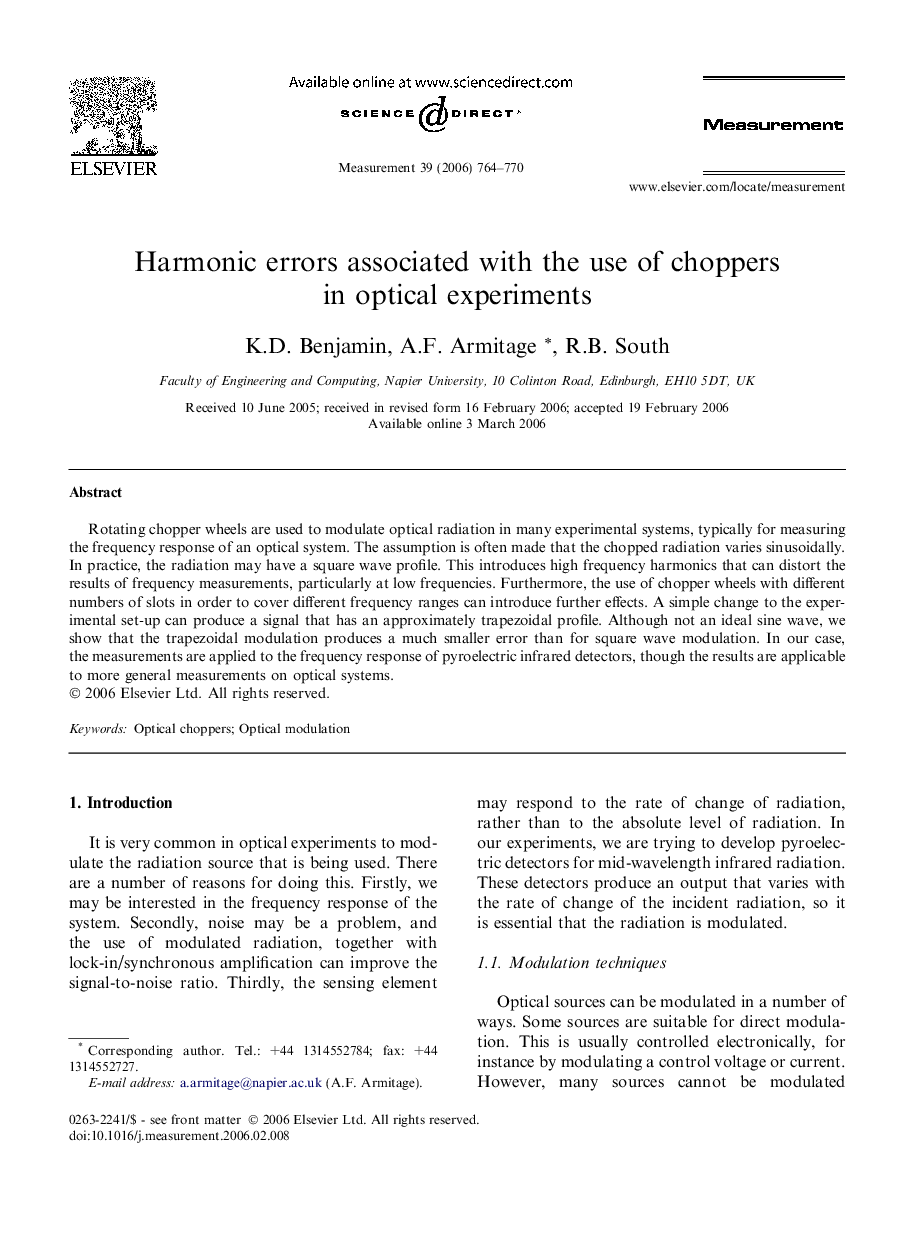| Article ID | Journal | Published Year | Pages | File Type |
|---|---|---|---|---|
| 730782 | Measurement | 2006 | 7 Pages |
Rotating chopper wheels are used to modulate optical radiation in many experimental systems, typically for measuring the frequency response of an optical system. The assumption is often made that the chopped radiation varies sinusoidally. In practice, the radiation may have a square wave profile. This introduces high frequency harmonics that can distort the results of frequency measurements, particularly at low frequencies. Furthermore, the use of chopper wheels with different numbers of slots in order to cover different frequency ranges can introduce further effects. A simple change to the experimental set-up can produce a signal that has an approximately trapezoidal profile. Although not an ideal sine wave, we show that the trapezoidal modulation produces a much smaller error than for square wave modulation. In our case, the measurements are applied to the frequency response of pyroelectric infrared detectors, though the results are applicable to more general measurements on optical systems.
